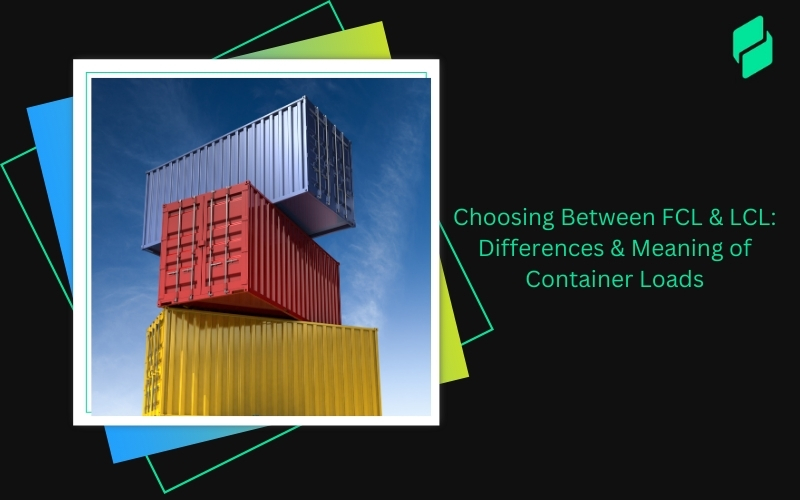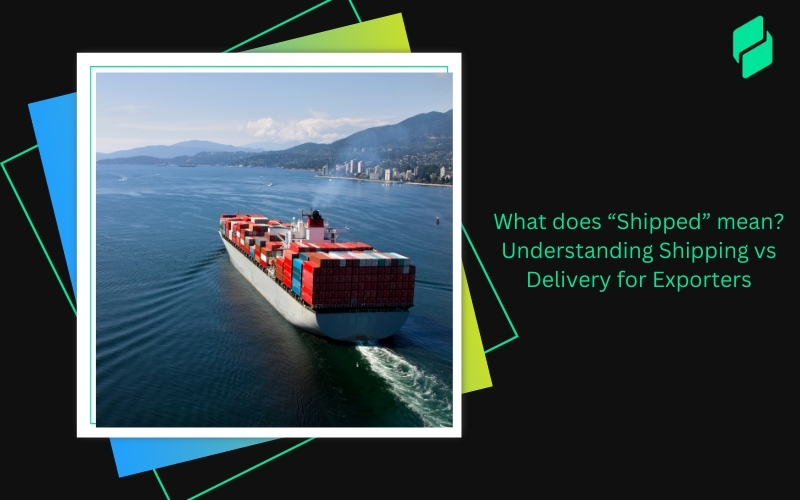Optimize your business: use unlimited savings with Pazago fulfilled now!
Get Started ->Imagine you're closing a deal with a buyer in another country. You've worked hard to secure the terms, and everything seems in place. But then, when you're getting ready to ship the goods, a small detail catches you off guard: the shipping terms. You thought you had agreed on how the shipment would be handled, but now you're unsure about the specific responsibilities, costs, and risks involved.
For Indian exporters, understanding Incoterms is crucial to avoid confusion and costly mistakes. FOB (Free On Board) and FCA (Free Carrier) are two of the most commonly used terms. While they may seem similar, they each come with distinct rules. In this blog, we'll explore the differences between FOB and FCA so you can choose the best one for your business.
What is Free Carrier (FCA)?

FCA (Free Carrier) is a shipping term that can be used for shipments via any mode of transport, such as sea, air, rail, or road. Under FCA, the seller is responsible for getting the goods to a specified location: their own premises or a designated terminal. From there, the buyer's carrier takes over responsibility. This term offers more flexibility than other Incoterms, as it can be used for shipments via various transport methods.
Here's a breakdown of the responsibilities under FCA:
- Seller's Responsibilities:
- The seller must transport the goods to the agreed-upon location (this could be their own premises, a terminal, or another point).
- The seller is also in charge of handling export clearance and making sure the goods are prepared for shipment.
- Buyer's Responsibilities:
- Once the goods are transferred to the carrier, the risk and cost shift to the buyer.
- The buyer is in charge of arranging and paying for the main transportation, whether it's by sea, air, or land, and is also responsible for handling any import duties and taxes.
With FCA, the key moment when the responsibility and risk transfer to the buyer is when the goods are delivered to the carrier. This transfer can happen before the goods reach a port, offering flexibility in choosing where the seller provides the goods. Now, let's look at FOB, another commonly used term in international shipping.
Also Read: Understanding FCA Incoterms And Free Carrier Shipping Terms
What is Free On Board (FOB)?

FOB (Free On Board) is a shipping term for sea and inland waterway transport. With FOB, the seller's job is complete when the goods are loaded onto the ship. After that, the buyer takes on all costs, risks, and responsibilities for the shipment. It's a popular term for larger shipments, particularly when goods are shipped by sea.
Here's a breakdown of the responsibilities under FOB:
- Seller's Responsibilities:
- The seller is responsible for all costs up until the goods are loaded onto the vessel.
- This includes export duties, taxes, and transportation costs to get the goods to the port.
- The seller must also handle the export customs clearance.
- Buyer's Responsibilities:
- Once the goods are loaded onto the vessel, the risk and cost are transferred to the buyer.
- The buyer arranges and pays for the main carriage from the port, including freight, import duties, and taxes.
- The buyer also assumes responsibility for the goods during transit.
In summary, FOB is beneficial when both the buyer and seller want clear-cut boundaries of responsibility, with the risk transferring to the buyer once the goods are loaded onto the ship. Now that we've covered both terms let's look at the key differences between FOB and FCA.
Also Read: Understanding Free on Board (FOB) Incoterms in Shipping
Key Differences Between FOB and FCA
While both FOB and FCA define the responsibilities of the seller and the buyer during international shipping, they do so in different ways. Here's a comparison table that outlines the main differences between FOB and FCA:
This table should help clarify the primary distinctions between FOB and FCA, making it easier to determine which term best suits your shipping needs. Now, let's explore when to use each term, considering factors like transport mode, cost management, and flexibility.
Also Read: FOB vs CIF: What's The Difference? Which Is Better?
When to Use FOB vs. FCA

Choosing between FOB vs FCA depends on several factors, including transport mode, risk management, and cost considerations. Here's a quick guide on when to use each term:
- Use FOB when:
- Shipping by sea or inland waterways.
- You prefer the seller to be fully responsible until the goods are loaded onto the ship.
- The buyer is comfortable managing the main carriage and associated risks after the goods are on board.
- Use FCA when:
- Shipping via multiple transport modes (sea, air, rail, or road).
- You want flexibility in choosing the delivery location (e.g., seller's premises, terminal).
- The buyer is comfortable taking responsibility once the goods are handed to the carrier, even before reaching the port.
In short, FOB is ideal for sea transport with a clear handover at the port, while FCA offers more flexibility and is suited for various transport modes. Now that you know the key differences and when to use each term, let's discuss how Pazago can simplify the shipping process.
Also Read: What Are The Differences Between FOB Shipping Point And FOB Destination?
Managing Shipping with Pazago

No matter which Incoterm you choose, Pazago can simplify the shipping process for both FOB and FCA shipments. Here's how:
- Document Management: Easily store and access all export documents, ensuring compliance with FOB and FCA terms.
- Logistics Solutions: Enjoy reliable FCL or door-to-door shipping with safe road transport options aligning with both FOB and FCA.
- Real-Time Shipment Tracking: Get 24/7 updates on shipment progress, improving visibility for both sellers and buyers.
- Quality Inspections: Arrange quality checks on the platform, ensuring goods meet required standards before shipment.
- Payment Services: Pazago simplifies payment processing, offers seamless currency conversion, and provides financing options to help exporters manage cash flow and minimize financial risks.
Pazago simplifies the entire shipping process, no matter which Incoterm you choose, reducing risks and improving efficiency. Let's finish up with some key takeaways.
Conclusion
Understanding the differences between FOB and FCA is essential for managing shipping terms effectively. Each term has its own set of responsibilities, risk transfer points, and cost allocations, and choosing the right one can impact your shipping process, costs, and overall efficiency.
By selecting the correct Incoterm, you can simplify your international transactions, avoid unexpected costs, and ensure a smoother process for both you and your buyers.
No matter which Incoterm you choose, Pazago can help simplify the process, making your shipping more efficient and transparent.
Ready to simplify your shipping process? Book a demo today and see how our platform can help you manage shipments with ease!


.png)








